PSYC 170 - Summer 2013 - Professor Claffey
Notes: Research Methods
PDFResearch Goals
_______________ a single patientidentify damage in the brain, if detectible
differentiate a hearing problem versus a language problem versus a memory problem
identify a specific disease
characterize the ______________ of a population
planning abilities continue to improve until ~20 years old, then plateau
do people with ADHD have better or worse working memory compared to non-ADHD controls
identify ________________________ relationships
the frontal cortex is activated by working memory tasks
London taxi drivers have enlarged hippocampus
schizophrenics have enlarged ventricles
Neuroimaging
creating a ______________________________ of the brain
acute differences: detecting tumors, hemorrhaging, congenital abnormalities
subtle differences: contrast size of structures between different populations
differences tend to be nominal and unclear if cause/correlation
________________________
identify a group of patients that all have damage in a similar area (e.g. right frontal lobe)
damage might be due to different causes, lesion might be different sizes
compare differences in behavior between lesion group and non-lesion group
________________________ - visualizing changes in the brain related to activity
an active area doesn't mean a necessary area
an alien might observe that a car radio is typically active, but it isn't necessary for motion
techniques differ in their spatial/temporal resolution
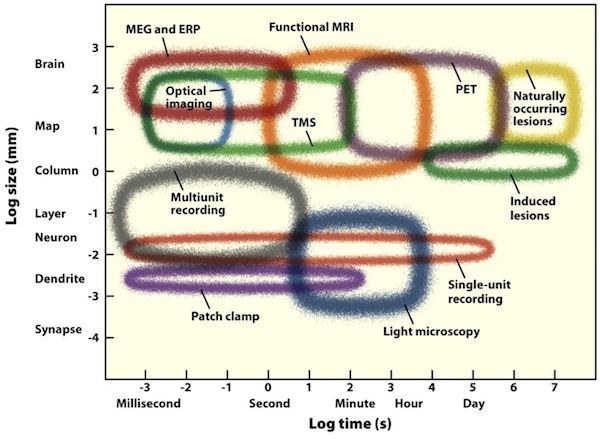
Structural: CT
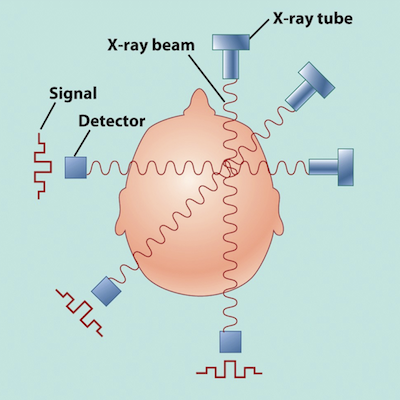
|
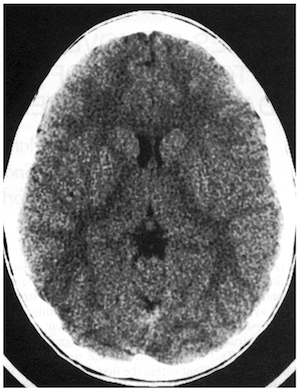
|
stacks of ________________ images to create a 3D image of the brain
more common for clinical setting than research lab
cannot distinguish gray and white matter
brightness of imagine is determined by __________________________________
developed in 1960s
Structural: MRI
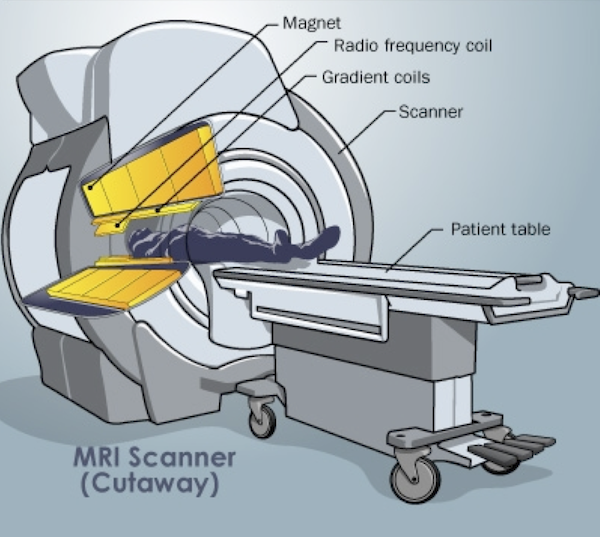
|
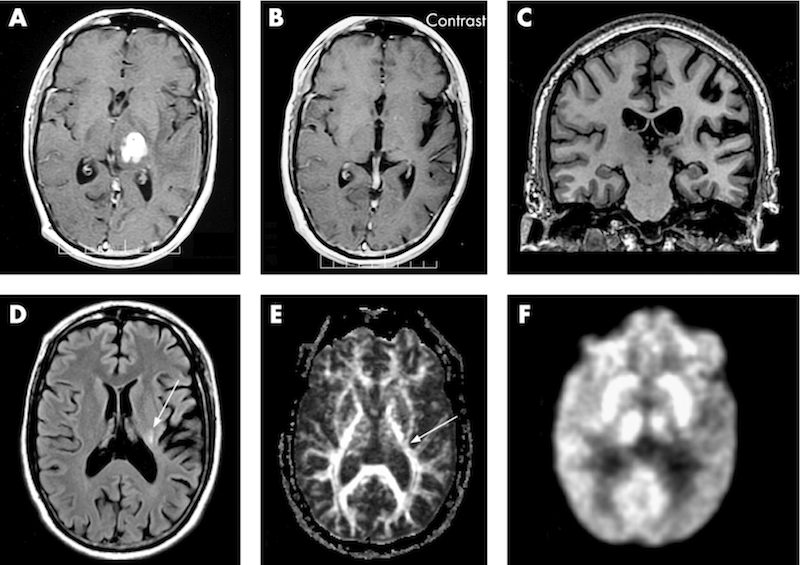
|
uses powerful magnets to manipulate the atomic spin of hydrogen atoms
used in both clinical and research settings
brightness of image is determined by ________________________________
differences across tissue: bone, white matter (myelin), gray matter, ventricles
used for analyzing tissue since 1970s
Functional: fMRI

uses MRI to detect rate of deoxygenation of blood
__________ contrast - blood-oxygen-level dependent
assumes that areas of high blood deoxygenation are areas of high neuronal activity
________________ response - how low it takes for blood flow to change in an area
takes about 2 seconds to reach peak response, can return to baseline in ~7 seconds or stay sustained
orders of magnitude slower than the time scale of action potentials
a typical experiment contrasts blood flow for two different conditions
e.g. viewing pictures and laying still in the dark
Functional: PET
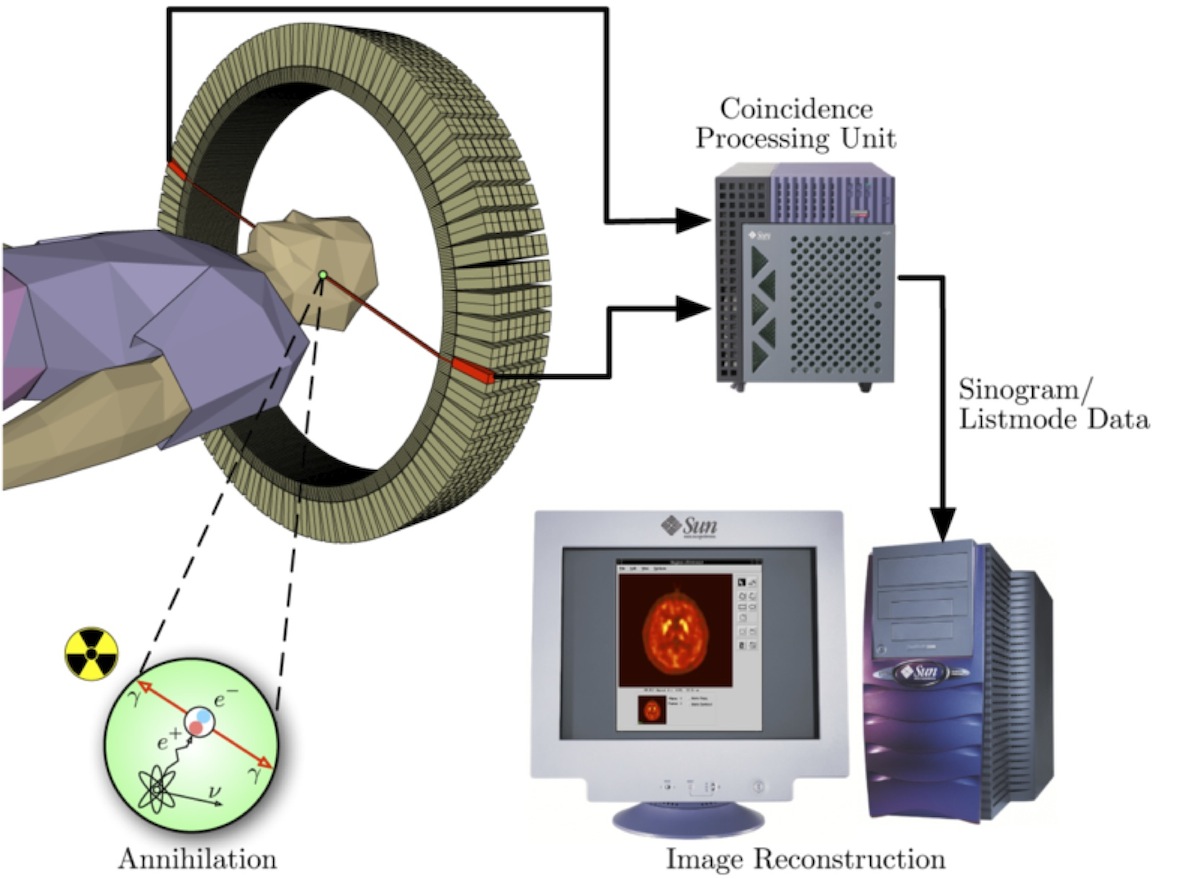
|
 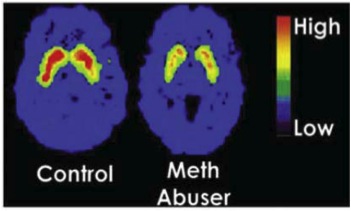
|
subject has a radioactive agent administered through IV
lays in an array of radioactive detectors
when the radioactive agent interacts in the brain, it releases a radioactive particle
the array of detectors can triangulate where in the brain the particle came from
able to localize molecular events in the brain
which molecular event depends on what radioactive agent was used
examples: using glucose, dopamine binding
Functional: EEG
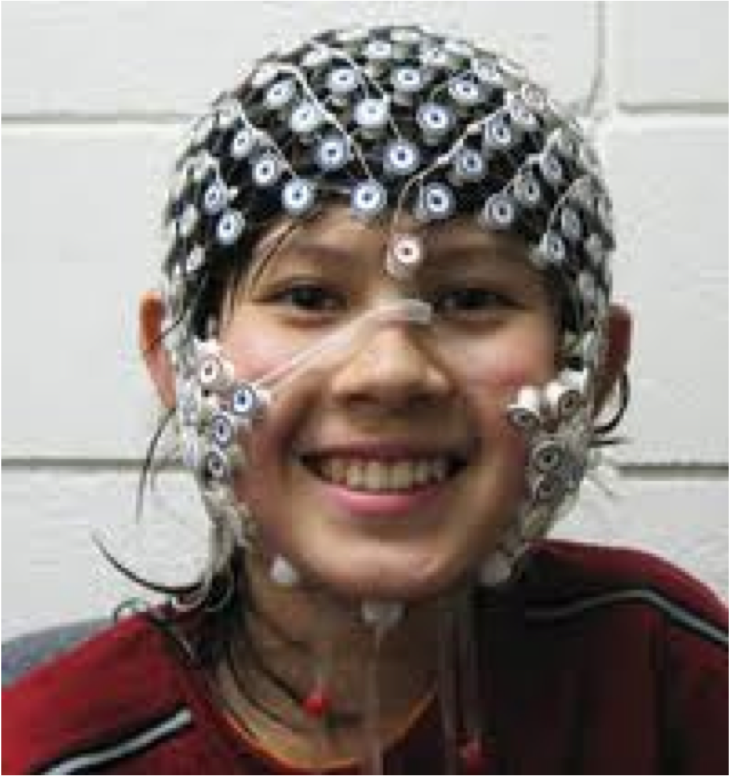 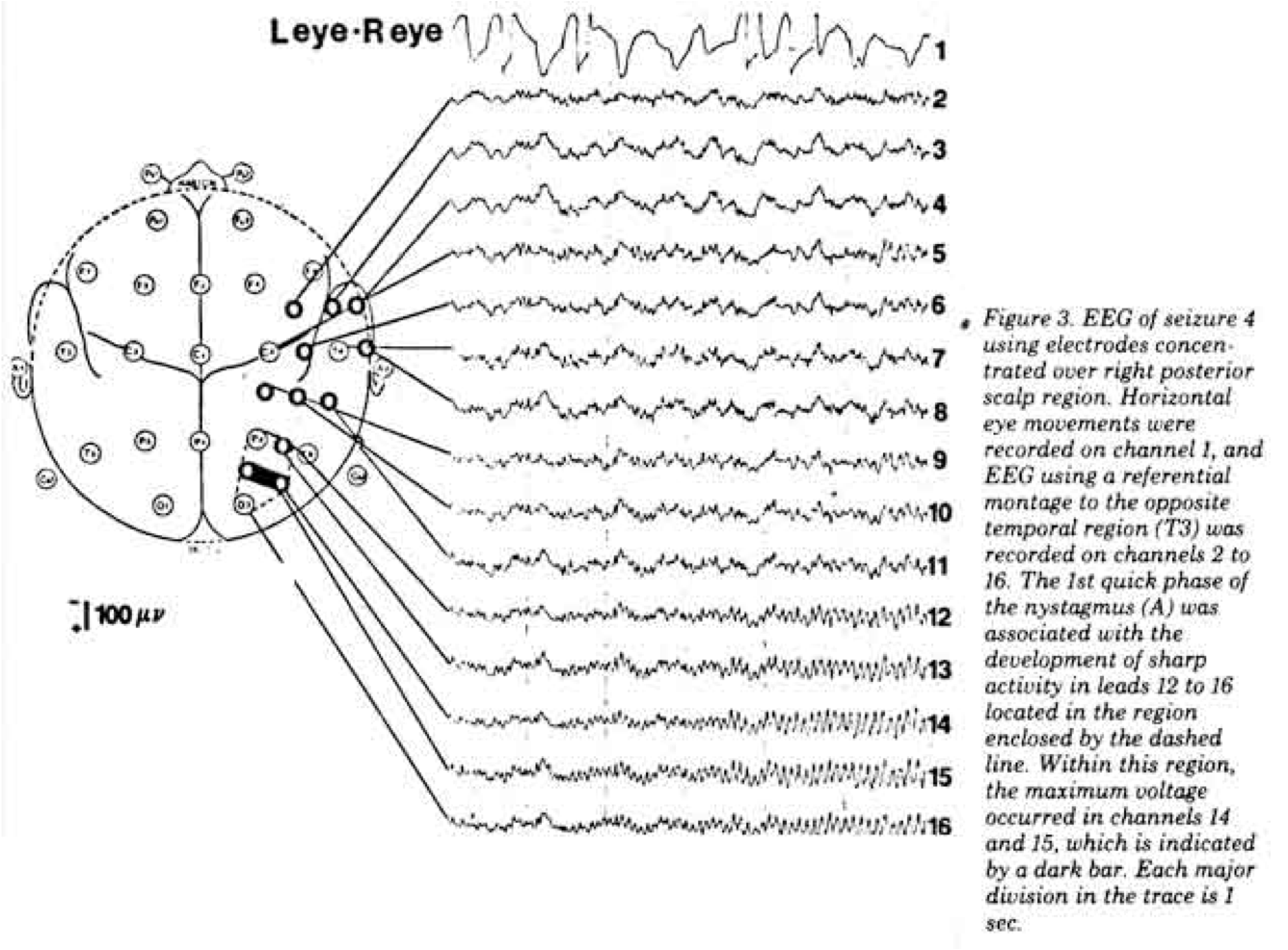
|
__________________________________ covers the scalp in electrodes that amplify electrical fields produced by action potentials typically between 10 and 256 different electrodes or channels sampling >1000 Hz, so at the timescale of action potentials rhythms depending on states of consciousness, there is synchronized activity at different frequencies examples: beta (awake), alpha (meditative), delta (deep sleep) excellent for detecting epilepsy the scalp "smears" the signal, so not exact about location can't pick up on signals below the cortex 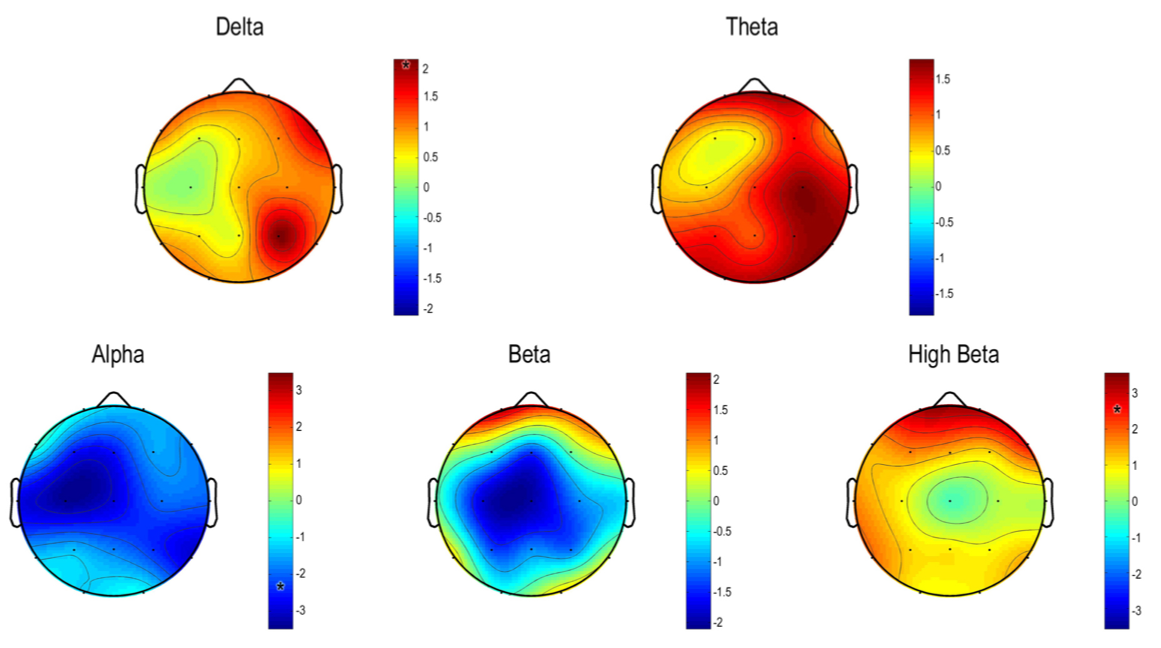 |
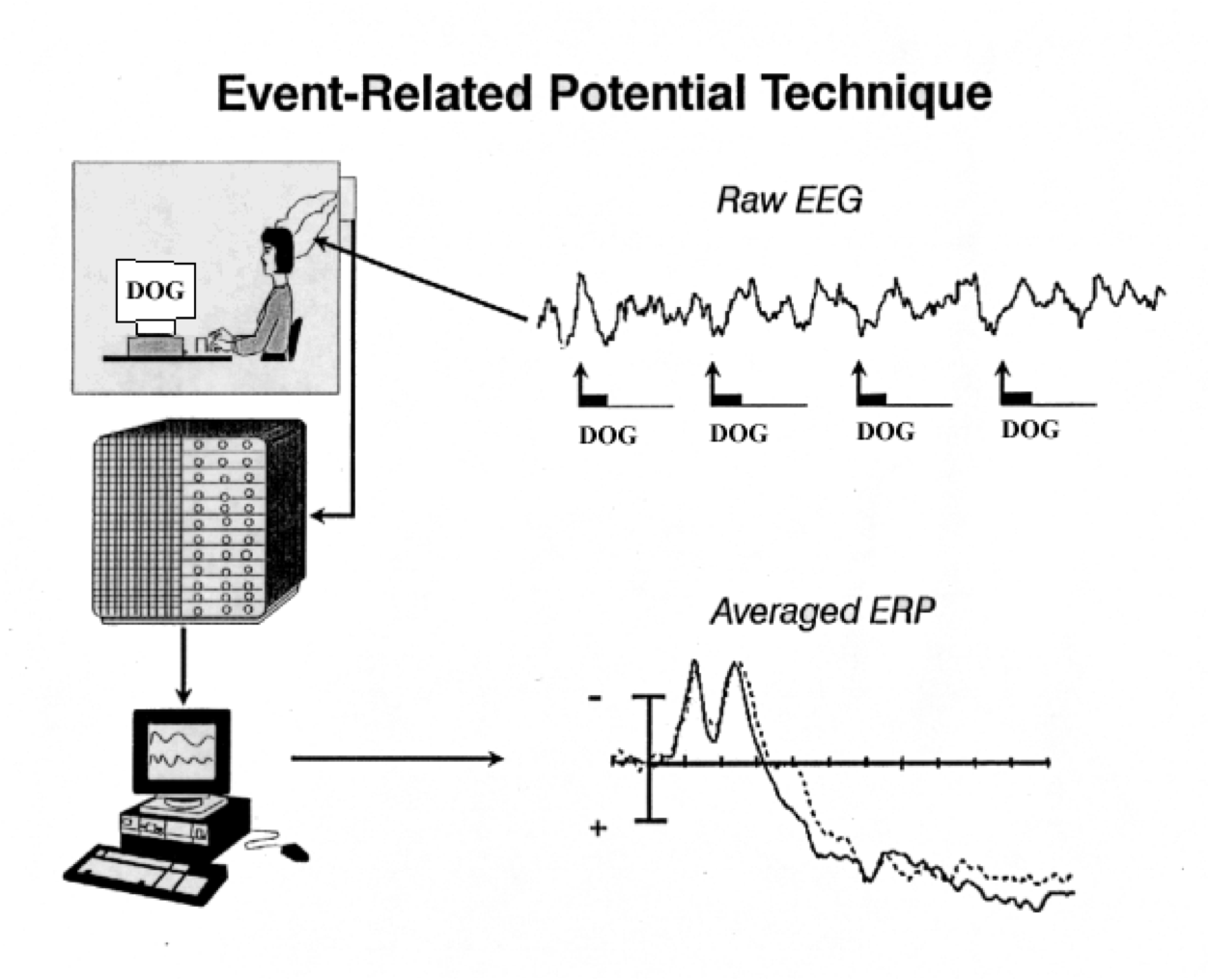
|
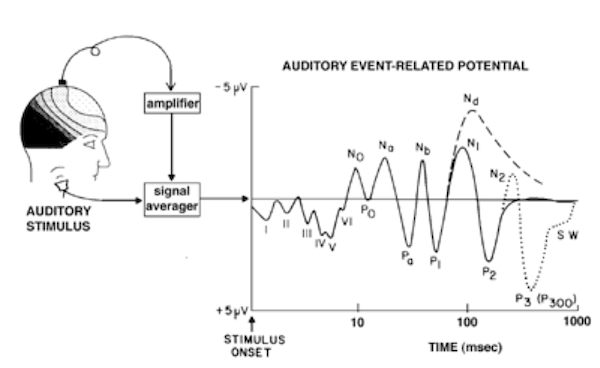
|
the response to an single event (such as presenting stimuli in an experiment) is noisy
the response to many, similar events can be averaged together to detect common features
typically look at:
latency - timing of respond (e.g. 100 ms after stimulus presentation)
amplitude - strength of electrical response (e.g. stronger signal for salient stimuli)
origin - location on scalp (e.g. occipital lobe for visual stimuli)
Animal Techniques
these would not typically fall under neuropsychology,but are included because they are driving the field of neuroscience
________________
a specific area of the brain is damaged by removal, drugs, or electrical stimulation
allows for the conclusion that an area is necessary for a function
____________________________
inserting electrodes directly into the brain to isolate action potentials for single neurons in highly specific brain areas
useful for understanding how individual neurons in an area respond to stimuli
neurons can also be stimulated to affect behavior
______________________
introducing new DNA to alter the physiology of an organism
examples: increase or decrease a specific receptor, transmitter, or metabolic protein
________________
measure or alter the molecular make-up of neurons
example: measuring neurotransmitters in synapses, adding genetic material to inhibit RNA
historically, measuring a molecule required removing the tissue and potentially destroying it
new techniques allow for the live imaging of molecules in tissue in awake, behaving animal
Behavioral Tasks
tasks that are intended to measure a concept of brain functionalitycould diagnose a deficit in a patient or quantify an ability in a population
____________________________
taking an abstract concept (e.g. working memory) and assigning an objective measure (e.g. numbers recalled)
even when an experiment is technically well-executed (e.g. randomized subjects, valid stimuli, good analysis),
there can be much debate about whether the task is a good operationalization of a concept
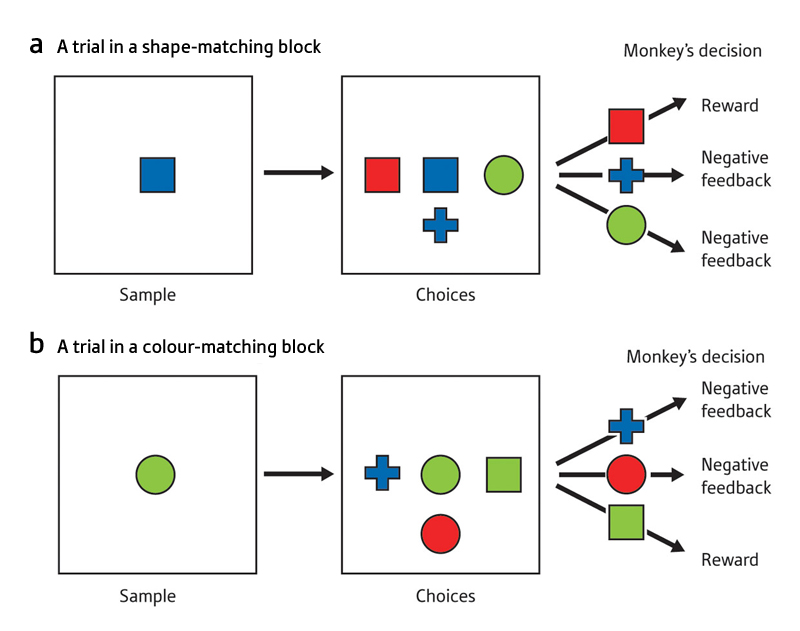
|
Wisconsin Card Sortingmeasures _____________________________________________subject sorts cards with different colors, shapes and number of items the rule for sorting is not revealed and must be guessed the rule occasionally changes and subject has to detect and adapt to change |
Go/No Go
measures: ______________________on most trials subject is shown a green circle ("go") and responds as quickly as possible by pressing a button
on a minority of trials, a red circle ("stop") is shown instead and subject must not react with the usual button press
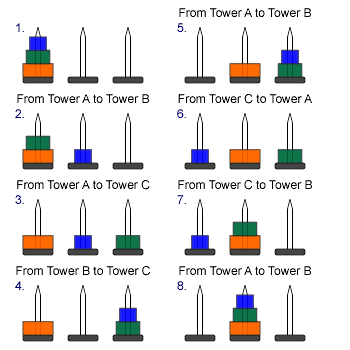
Source: people.missouristate.edu/lesreid/POW01_03.html |
Tower of Hanoimeasures: ________________________________________subject must re-stack wooden rings onto 3 different pegs in order to match a target pattern only one ring can be moved at a time subject doesn't physically manipulate them, but instead has to solve mentally and describe the moves |
Facial Emotions
measures: __________________________________subject is shown a series of faces expressing different emotions and has to identify the emotion

Clinical Scales
____________________________
used in both clinical and research settings
typically measure lifestyle or chronic conditions
self-reported scales are easily influenced by survey environment and subject's intentions
there are often multiple, "equally valid" scales for a particular topic, though one may dominate by tradition
ratings for verbal response, eye tracking and muscle response
score of 3 indicates full coma, 18 indicates normal consciousness
predictive of outcome month later
Barratt Impulsiveness Scale (BIS, link)
self-report (answered by subject about themselves)
I say things without thinking, I concentrate easily, I like puzzles
factors: attention, motor, self-control, cognitive complexity, perseverance, and cognitive instability impulsiveness
adults with ADHD score higher on BIS and perform worse in a continuous monitoring task (Malloy-Diniz et al, 2007)
Beck Depression Inventory
self-report (answered by subject about themselves)
I am sad all the time and I can't snap out of it, I don't cry any more than usual
factors: hopelessness, irritability, guilt, fatigue, weight loss, libido
facilitated a shift away from a psychodynamic approach towards a cognitive approach
Related: Hopelessness Scale (BHS), the Scale for Suicide Ideation (SSI)
correlation between Beck and serotonin sensitivity (Peirson & Heuchert, 2000)
Other
left/right split visual displaysdeliver information to a specific hemisphere of the brain
test for lateralization of a function
__________
identify physiological changes in the brain after death
started with Broca & Wernicke in 1860s
some modern diseases can only be diagnosed post mortem
e.g. plaques that indicate Alzheimer's disease versus non-AD dementia
______________________________
measure the electrical resistance of the palms
an emotional response typically cause the palms to sweat, which reduces the resistance
can indicate an emotional reaction to a stimulus without requiring a verbal/conscious report
Copyright 2013 - Michael Claffey